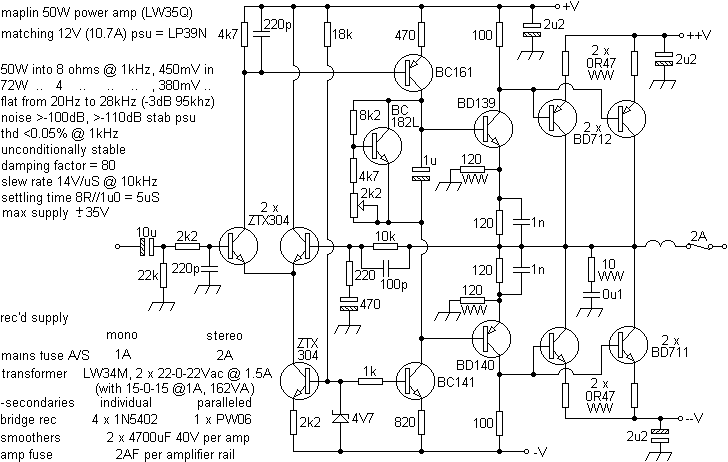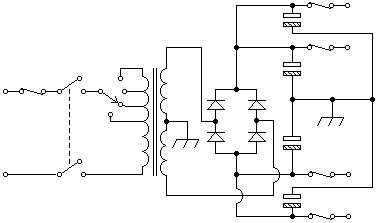

A few popular circuits supplied by Maplin (now discontinued).This design suits transformers of 22-0-22 to 28-0-28V and inspired a matching 12V switched mode power supply. A high quality (E-I) mains transformer with separate secondaries (LW34M) was available.


A re-examination of this approach is given by Rod Elliott, removing the class A driver's current source, adding a bootstrap capacitor and rearranging the local feedback around the class B drivers. J. Ellis' observations on bias stability can easily be applied to these arrangements with good effect.A less sophisticated, but meatier design intended for 32-0-32V transformers. Fit 3A fuses, all output devices mounted on 2.1°C/W heat-sink. Uprating the output stage with devices with a higher Vce, or reducing the supply voltage, will increase reliability.
A mosfet design intended as a guitar amp that has seen upgrading, which has ranked amongst Maplin's best selling products, and with good reason. This was available with a bridging module for high power demand. Note use of low noise, high voltage, small signal transistors. This design certainly ranks as the simplest mosfet design employed and, importantly, none have failed.
This was derived from an Hitachi application which spawned a number of copies and derivatives.Output devices could be easily paralleled (with their attendant gate resistors) for higher power handling. The Maplin design was used for experiments with sub-bass units using the modifications set out below. Power supply smoothing was increased substantially, as was heat-sinking, and where a LF roll-off was required, an input coupling cap was re-fitted. A power output of 30Wrms max suited most applications involving 12-18" speakers. Later designs used class D.
Contact me
especially if you want additional content to this page
or if you find any links that don't work. Don't forget
to add the page title or URL. Take care!
Back to index, sound, tips or home.